Deprecated: ltrim(): Passing null to parameter #1 ($string) of type string is deprecated in /home/brandonabley/public_html/wp/wp-includes/wp-db.php on line 3031
I WENT TO CAMBODIA
In July 2019, I traveled to Cambodia. There I partied in nightclubs, explored ancient temples, made a few new friends, ate strange food, and visited a mass murder site. I returned home extremely sick and about ten pounds lighter with an intestinal parasite.
The Origin Story
My interest in Cambodia started with my work at a consulting firm. One of the junior resources approached me with an RFP from the United Nations to build a reporting system for child health care outcomes in Cambodia, a country I previously only had passing familiarity with and vaguely understood in association with proxy wars in Southeast Asia in the 1960s-80s and a book on the Khmer Rouge I had read in high school. The work was a little outside of our verticals but I decided to put together a team and bid for it. We had a very compelling international team but ultimately did not win the work. It was a long shot anyway.
However, I remained curious about the place. Late one weekend I decided to set up a recurring donation to a girls’ dormitory in the capital city, Phnom Penh, having earlier researched in preparing the doomed business venture described above that young women had difficulty getting lodging in the city for cultural reasons, and so they had disproportionately less access to education.
And being me, sometime later I figured I might as well go there and see the country for myself.
- It was a little hard to find the dorm; I had been given only the address. My tuk-tuk driver, who did not speak English, seemed puzzled when I showed him where I was going, but he eventually shrugged and drove me off to the edge of the city. We arrived at the end of a twisting, dusty alleyway, far outside of downtown. He hesitated before he left, seeming certain I did not know where I was going, and out here, I'd probably have trouble finding a ride back. I looked around--there was nothing but modest housing, people doing their laundry or daily chores, some giving me puzzled looks as I wandered around. Eventually I walked up to a woman and some children who were playing. I tried a few different combinations of basic translations on my phone; iterations of "school", "girls", "dormitory", "college". Eventually one of the boys' eyes lit up. He grabbed my hand and drug me off down a few turns of this alleyway. He stopped and pounded on a nondescript solid iron gate, which was exactly where I had been dropped off earlier, and shouted something in Khmer. The door slid open, and the guards, who were expecting me, welcomed me to the Harpswell Foundation Phnom Penh dormitory.
- I was given a thorough tour. The students told me about what they were studying and showed me their facilities, introduced themselves and told me stories. I am not sure if it is common that donors visit or not, but they treated me like it like a pretty big deal. The young women all lived together, cooking and studying; typical dormitory stuff. They were very proud of it, and understandably so, because while this is a very ordinary institution to Americans who leave home to go to University, it is not the normal case here. I was humbled and honored; these hard-working and intelligent women deserve to have everything more in the world than I ever will, and they will work a hundred times harder for it too.
Phnom Penh
Phnom Penh was one of my favorite cities in the world to visit; I found its truly insane energy captivating, the diverse mix of expats from around the world and the lack of more or less any conventional sense of social order as I understand from my western perspective equal parts liberating and disconcerting. I was only there for a few days prior to heading out to Siem Reap and some temples, but I certainly had some memorable experiences and made a couple of interesting friends.
- I can't remember the name of the backbacker bar/hostel I took this photo from, but it shows a fairly typical view of life in downtown Phnom Penh. Its downtown is crowded, dirty and chaotic with a relentless, disorganized energy. It is never quiet, and the people are stacked up on top of each other. This photo also shows the ongoing gentrification of the city; across the street from humble, crowded apartments sits a brightly-colored, brand new luxury hotel with air conditioning (a relatively uncommon blessing in the merciless, sticky heat of Cambodia).
- In much of Southeast Asia, a motorbike is just the standard mode of transportation. They are affordable, the cities are too crowded to accommodate cars and it never gets cold. This is a very typical parking lot.
- As a former radio technician, I have always found these tangled masses of telecommunications lines in southeast Asia equally amusing and horrifying; it was delightful to finally see them in person. My understanding is that it is a byproduct of a long-standing practice of simply running a new line as each new customer comes along and running everything on poles. Most developed countries have stronger central urban planning with planned rights of way for cabling and, more importantly, tend to bury the cables. While it's very cheap initially to run overhead wires like this, it's much more expensive to manage long-term, as they will constantly break, get compromised by moisture or suffer some other fate from being exposed to the elements all the time. But given the explosive rapid growth of Phnom Penh in the last couple of decades as the kingdom has rebuilt the country the Khmer Rouge destroyed, it is understandable the telecommunications infrastructure was built as quickly and cheaply as possible.
- Though nicer parts of town would feature proper sidewalks, in much of the older sections of Phnom Penh there is not really a concept of varying walking spaces from driving ones. You just sort of walk in the street and hope that nobody is going to hit you with their motorbike as they swerve around you on both sides. I was generally reasonably confident that I would be ok. There used to be sidewalks, but they are completely taken over by street vendors and their stalls.
- I do not believe I have ever drank more beer in my life than I did in Cambodia; between the relentless heat and ubiquitous all-day-long-happy hours with two-for-one $1-2 pints of ice cold draft beer, I'd stop to cool down and rehydrate every thirty minutes or so. The popular local brands, Cambodia and Tiger, were light and very drinkable lagers.
- In 1937 French-occupied Cambodia, ផ្សារធំថ្មី, or the Central Market, was said to be the largest mall in all of Asia. Today, with the Aeon shopping center down the street, it is sort of a throwback, stuck in time between the street vendors of old and the climate-controlled western shopping mall with luxury brands and a cinema on the other end of downtown. In American terms, it is sort of a much more upscale flea market. I very much appreciated the art deco architecture, however, and perused the countless vendors selling daily household items, jewelry, electronics and the like.
- The National Museum of Cambodia (សារមន្ទីរជាតិ), about one century old, was like every other structure in the city left abandoned and in disrepair during the Khmer Rouge regime when the city was evacuated by force under the brutal regime. Reopened in 1979, it now serves as one of the country's premiere museums. Though ostensibly an example of traditional Cambodian architecture, it was designed by George Croslier, a Frenchman who was born in Phnom Penh in the late 19th century when the nation was then a French Protectorate, and spent much of his life in the country. The building in reality is better characterized as inspired by Croslier's limited knowledge of ancient Cambodian temples and designed to meet western sensibilities for museum spaces.
- Taken in BKK, a recently redeveloped portion of the city with expensive shops, hotels and luxury apartments. I found this neighborhood pleasant enough, but really much less interesting than the organized chaos and heart at the older part of the city center. BKK is also extremely expensive. However, like the rest of the city, it was packed with motorbikes.
- Throughout BKK and other developing districts, you see tons of construction of modern, high-rise buildings; a sign of the city's explosive growth and inexorable change in its culture and character.
- The Russian Market in Phnom Penh, so-called for the Russians that once shopped there. The city's already oppressive heat is particularly stifling here, where you are boxed in by the tin roof and crowded corridors in hundred-degree heat. It is otherwise a pretty typical Asian street market, with hundreds of stalls selling daily household goods, clothing, electronics and media. It was neat, but in the heat I could not stand to explore it for more than a few minutes.
- Wat Ounalom (ឧណ្ណាលោម), one of the few still-standing ancient Buddhist temples in the city. It was constructed in 1443. During the Khmer Rouge regime, where religion was officially illegal, about half of the temples in the country were destroyed and the remaining half, including this one, fell into disrepair, used for storage or simply left to rot completely. It has since been restored.
Nightlife
The late Anthony Bourdain had a deep love for Cambodia, simultaneously describing it as a place where people come to behave badly while also expressing a deep hatred for the American politicians that carpet-bombed its countryside in the 1960s and 70s. While the country’s two biggest cities (Phnom Penh and Siem Reap) certainly do offer plenty to live up their hedonistic reputations, economic growth in the country, immigration by well-monied expats, foreign investors and what I suspect is just a general national desire to cater to classier breed of tourist–for better or worse–has led to an explosion of upscale pub streets with booming nightclubs in addition to the divey backpacker bars selling watered-down $0.50 beers to obnoxious tourists.
- Both of the major cities were replete with nightclubs, catering to a variety of clientele, whether locals, expats, tourists or foreign businesspeople. But a nightclub is a nightclub; they all start to run together over time.
- If there is a thing, hipsters will eventually show up and ruin it. Phnom Penh is no exception. Here is a charming alleyway that a local friend had taken me to, full of whiskey bars and mixologists. My understanding is that most of the bars packed into this alley are owned by the same expat.
- Pub street in Siem Reap is a delight for tourists, with hundreds of bars and clubs and nearly as many live bands. Though labeled "pub street", it is actually several city blocks in size.
- In general, Siem Reap was much more upscale than Phnom Penh, and a lot less crowded. It is quite close to Angkor Wat and the other temples the country is most famous for, so it is only natural that the city would build out its capacity to entertain backpackers and other adventurous tourists between temple excursions.
- I fell in love with these booze carts, which would usually come out pretty late at night. It is of course a good idea to stop for a shot of tequila in the street en route to your next place, no?
- All booze carts are similar, but this one is special, because it was the last one on the walk back to my hotel. We finished a couple of evenings here after leaving the bars and clubs on pub street.
- Though most bars were extremely inexpensive, at this rooftop bar at the top of Vattanac Capital national bank headquarters, I ordered a dry martini for something like $20USD. I remember my friend thinking I would really like it, as it was a fancy, western-style bar that offered fancy cocktails on the highest structure in Cambodia. I couldn't get out of there faster.
- The view, however, is quite spectacular, if you like to look down on people, both literally and figuratively, while sipping a cocktail worth a local laborer's weekly salary. I certainly didn't, and I don't recommend the place.
The Most Horrifying Crimes Ever Committed
My blog will not serve as an authoritative source on the crimes committed by the Khmer Rouge, a topic that deserves much greater sensitivity and scholarship than I can offer here. I’ll provide a brief overview and my personal experiences. If you would really like to read more, I recommend legitimate historical sources, or at least the Wikipedia article on the topic.
In the late 1970s, Pol Pot and his Communist Party of Kampuchea (CPK, or popularly, the “Khmer Rouge”) took power in Cambodia after fighting a brutal civil war. Though the CPK party had been active for many years prior, a combination of geopolitical and economic factors led to their ultimately taking control of the country. There are really no good actors in this story, and I am no historian, but even a cursory read of the events would lead one to conclude that every major world power at the time, including The United States, China and the Soviet Union were all complicit in what would later happen.
In 1975 the Khmer rouge took power and implemented an extreme interpretation of Maoist thought, forcefully evacuating the residents of every major city to agricultural compounds and forcing them to work on farms to be entirely self-sufficient. Naturally, the agrarian paradise envisioned by Pol Pot and his associates did not materialize, and much of the country’s entire population died, either collapsing on the long forced marches to distant compounds or starving to death once they arrived there–if not outright murdered by the regime first, which was more likely.
The new government set to orchestrated mass murder of the entire cultural, educated and political classes. This included anyone with connections to the previous government, artists, painters and musicians; professionals or educated people including people who spoke foreign languages, economic saboteurs, enemies of the party or anyone else that could so be charged as a member of these groups. They were the enemies of the post-economic agrarian collective Pol Pot and his associates had envisioned.
Estimates vary, and I don’t want to step on serious scholarship. Most studies I have checked estimate that up to between 1/5 and 1/4 of the entire country’s population died, in most cases from violence, and in most of those cases, from execution. In all there were between 1-3 million people killed in a country of under 8 million residents. All of this within four years.
Even after the fall of the Khmer Rouge in 1979, several hundred thousand more people, or about 5% of the remaining living population, starved in the following year as the shattered nation began to rebuild.
After a Soviet-backed Vietnam invaded and overthrew the Khmer Rouge, much of their leadership went into hiding, though Pol Pot commanded insurgent troops and the Khmer Rouge party remained a legitimate political entity well until the 1990s. Justice has been slow; Pol Pot was not captured until 1997, and his two right-hand men were convicted only in November 2018.
While in Cambodia I had dinner with a middle-aged woman who had survived through these times, the last of her once twelve-or-so member family. As we sat in a fashionable Phnom Penh restaurant, she told me about growing up during this time, and I’ll never forget the things she told me. There is one story that sticks with me the most: her description of the sound of her brother’s last breath before he succumbed to starvation as he lay on the floor next to her.
- If you didn't know any better, from a distance, it is seems just a very nice spot--lush with greenery, singing insects, a bunch of chickens running around and monks doing their daily work and prayer at a small temple.
- Choeung Ek (ជើងឯក) is the most well known of the so-called Killing Fields, the hundreds of locations throughout Cambodia collectively containing up to about 20,000 mass graves. Here you will see only a fraction of what happened under the Khmer Rouge. The site is a short drive from Phnom Penh. I came here alone, and stayed a few hours to let the weight of what happened sink in.
- After the Khmer Rouge fell, they denied that the murders had ever happened. There was no evidence, after all, except for what everyone had clearly experienced. And so the international community set to find proof; to do so, they dug up a representative sample of the graves. You see here a mass grave estimated to have about 450 people inside.
- The entire site, the accessible area of which was up to about a square kilometer as I recall, had bumpy, uneven ground like this. These are the graves that the authorities didn't dig up, where the victims were allowed to lay at rest. Only a small portion of the graves were disinterred--only enough to be able to reasonably estimate what would be found in the rest of them. These mounds of dirt underfoot one must watch their footing on as they explore the site serve to remind one of the scope of what happened here: and at only one of over 100 such locations.
- Anecdotal reports said that chemicals were poured on the open pits full of human bodies. Later, evidence would prove this, and that the Khmer Rouge used a mixture of chemicals including DDT. This served dual purposes: it would cover the smell of the decaying bodies so as not to alert other nearby camps, and it would also ensure anyone that had been buried alive would die before they could climb their way out.
- There were stacked here over 1000 skulls. They fill the entire stupa. The message is clear: at this site, you see only a few mass graves have been exhumed. All of these skulls represent only a small fraction of the people buried here. Given the proximity of this site to Phnom Penh, one can only wonder whose heads are stacked here--how many of them were musicians, or how many of them worked in a hotel that had foreign customers, or how many were interested in astronomy?
- The investigation confirmed reports that, to save ammunition and other supplies, most executions were simply done with blunt force. The exhibit provided a guide to help identify which fatal injuries were sustained by, for example, a crow bar as opposed to a shoot of bamboo. At this point, I really lost my composure; there are many mass killings that I have read about or have seen evidence of first-hand. The inhuman cruelty, however, of assessing the situation and deciding to use a stick to save on bullets--it really got me.
- The soil of the site is littered with human teeth, which I understand is a very normal thing at the killing fields. As best as I could tell, when found, they are just collected by one of the groundskeepers, and some are put on display.
- The so-called "Magic Tree", the largest tree near the center of the compound. Here loudspeakers were outfitted, which would blast music to drown out the sound of suffering.
Nature
Many places in the world offer natural and scenic beauty. Of course, so does Cambodia. Southeast Asia, including Cambodia (and even moreso Vietnam), are known and portrayed mostly for being covered with choking jungles. Of course, their geographies have much more to offer than that. My photos will do nothing to correct that stereotype, because I only visited the jungles.
- The endless jungle canopy viewed from an outcropping we had hiked out to.
- I climbed something like 10,000 steps to find this view at Chi So Mountain. I went without a guide, and so I did not see the gorgeous temple that was about 500 more steps up, because the path was around the corner from some trees and I am idiot. I recommend you look the temple up; it is a beautiful historic site. And if you bother hiking up this mountain, I recommend going to the temple. I've heard it is nice.
- The endless steps I climbed up the side of a mountain in order to fail to see a gorgeous historic site on top.
- A typical home along the highways in semi-rural Cambodia.
- A path down to a popular recreational area at one of the national parks I visited.
- Just out of frame in this photo are about a 100 tourists goofing around in the water below. I was tempted to take a dip in the water to relieve myself of the crushing heat, but I didn't have a change of clothes.
- I always take time to praise the sun.
- I could tell that my driver was hesitant to pose for this photo. I can't imagine why.
The Temples that Inspire
The temples of civilizations of yesteryear have always inspired the western world–whether in Egypt, Latin America or Southeast Asia, all westerners share a common fiction of heroes that look like us uncovering the secrets of the ancient world and taming the forgotten unknown. Some of these stories range from only slightly problematic (Indiana Jones) to shockingly racist (the ending seqeuences of Apocalypse Now). Regardless, there is good reason to be inspired: these places truly are incredible.
Cambodia’s temples remain one of those great treasures of the ancient world. There are about 4000 such temples in the country, constructed from somewhere around 50 AD to the about 1400. During this period culture flourished; empires came and went, and they all built temples: lots of them. These temples were the walls and fortresses and places of worship and homes for nobility that anchored the society. They were built, as most structures of antiquity were, through the back-breaking work of millions of slaves.
There really is a sense of mystery about the temple complexes in Cambodia, which is only reinforced by trying to read about them. There is enough, though limited, history available for the nearly 1.5 millennia where the Cambodian empires were, at times, the largest advanced societies in the world. These empires built these temples. But it stops around 1450. At this point begins a dark age, when the last Khmer empire finally collapsed after a long period of decline. This dark age lasted until about the 1850s. Most of the history during that time is of questionable quality, and we have more or less only an outline. People did, of course, live there–for example, merchants that engaged in international trade, and a new capital would be built by a new king every couple of generations here or there. And there is much recorded history of its neighbors in Vietnam and Thailand meddling in the stagnating royal court’s internal affairs, warring with each other and claiming various territories over the centuries. There was also a short time where Imperial Japan occupied the territory in the early 1940s. But there is not much constituting a continuous history by its own people.
In 1863, King Norodom Sihanouk asked the French government to protect this nation from its neighbors, and so they settled the country and remade it in their image. And eventually, they stumbled upon these temples. There had been a small number of Khmers living in them continuously through the whole of the dark age, and every once in awhile some foreign explorer would find and write about them. The magic, and mystery, of these temples is a matter of perspective. To some people for a very long time it was just home.
- The famous Angkor Wat, Cambodia's most prominent and important temple complex. There are millions of photos of this place, and here is another.
- The detail in the construction is incredible, with countless shivas masterfully carved into the stone.
- A closeup of the shivas from the last photo.
- An ancient gate which has been repurposed as a road (asphalt out of frame).
- Bayon temple, perhaps the second-most famous temple of the ancient city of Angkor. Constructed around the 12th century.
- The view from the top of one of the temples I was led through. My friend that was with me--a Khmer woman--was not allowed to enter the temple, because she was dressed inappropriately, her knees showing. It is a crime to enter a temple dressed inappropriately in this country. My knees were showing, too, but I was offered an English-speaking guide and shepherded in. I felt guilty, knowing it was because I was a western tourist.
- You see so much intricate, thousand-year-old stonework while exploring these temples that you become desensitized to it. These shivas, large and small, cover nearly every surface of every one of many thousand temples.
- The whole time, I was dressed in these goofy, Indiana Jones outfits. But it really was practical to carry a bag (to carry batteries, water, food and bug repellent) and to wear a hat (the sun is relentless). Though I did feel self-conscious, and about four or five groups of Chinese tourists asked to be photographed with me.
Creatures
Between a trip to a nature preserve, clambering around temples and going on some hikes, I came across a variety of animals. I like to photograph animals because they are so peaceful and innocent–except, of course, for macaque monkeys, who I just have absolutely no affection for. These photos are taken in a variety of locations around the country.
- This stray was lounging in the woods on one of my hikes, and was by far the happiest of the creatures I came across.
- Animals in cages often strike me as sad. Nowhere is this more apparent than with other primates, whose facial expressions we can truly understand. Or maybe I had caught him at a bad moment. Though this photo is taken at a nature preserve, and for most of the creatures here, due to pervasive poaching it is either this or extinction.
- Though it seems cruel to keep a tiger in a cage, it seems much less so when considering a wild Cambodian tiger was last seen in 2007 before reintroduction efforts in the past few years. Tiger poaching is a problem in many countries, including here. The World Wide Fund for Nature estimates that 96% of wild tigers have been lost in the past century. The remaining few are kept in captivity and hopefully they will be allowed to once again roam free.
- The jungles were alive insects, crawling, flying, buzzing and stinging (my doctor advised not to take hydroxychloroquine as a preventative measure, given the fairly low chance I would be exposed to Malaria during a short trip with the certain chance that the drug would make me nauseous and give me horrible nightmares). During this season the forests were especially replete with butterflies.
- This guy seemed unusually happy to see me. I would soon find out why.
- No sooner had the elephant reached out to me with his trunk than a nearby vendor offered to sell me sugar cane and melons to feed to him. I obliged; partly to indulge my own curiosity of what it might be like to feed an elephant by hand and partly out of a desire to give the vendor a few bucks, and I figured it was harmless enough to feed an elephant some snacks. Though, I do wonder about the dietary fiber contained in an entire stalk of sugar cane.
Mammals with Hands are Bad
This applies to humans, raccoons, and in particular, to monkeys. Some evidence provided below.
- A moment after taking this photo this monkey hissed at me, and with a charging leap, grasped onto my leg, screaming and clawing. I kicked him off and he soared through the air. He landed in a perfect ninja stance, immediately charging and grabbed onto my leg again. I panicked, out of ideas and disinterested in suffering a bite from a wild monkey in a foreign jungle. Suddenly, my guide came to my rescue, striking the menace in the face with a large stick. The creature ran away, whimpering. My guide smiled. With a self-satisfied grin, she said: "use a stick. Monkeys hate sticks."
- If you were lucky, you might get just a disinterested glance. If you are unlucky, they will snatch your phone out of your hands, try to eat it and throw it into the river. At tourist spots they are everywhere, always assessing if you have something of value; namely, food.
- The temples featured these obese little guys who live in a weird symbiosis with messy tourists who leave their half-eaten garbage around. Truly, the macaques are the true rulers of Angkor Wat.
- There is a horrific trade of illicit macaques stolen from the wild and sold as pets; this absolutely can't be condoned. As much of a menace as they are, they are extremely cute; but please, don't think of taking one of these guys from the wild as a pet.
- This was my guide Annie, who at the nature reserve taught me about the animals and protected me from the awful monkeys.
What I Ate
I am adventurous eater, always on the lookout for whatever could reasonably pass as fit for human consumption. In Cambodia I ate everything from bad pizza to traditional grilled amphibian meat to fried insects and, in one case, a very bad piece of alligator meat.
- Fish amok, the national dish of Cambodia, which I had several times. It is a basic fish curry. The curry is served wrapped in a bamboo leaf.
- I started nearly every day with a bowl of relentlessly spicy soup like this one.
- Our hotel in Siem Reap greeted us with a variety of snacks. I was quite fond of the bamboo-wrapped sticky rice. The nuts were, like everything else served in Cambodia, unrelentingly spicy.
- A traditional meal we had near Angkor Wat, consisting of an entire grilled chicken, a grilled bullfrog that was also about the size of a chicken and some sides including red ant paste. I read that the satisfying tang and burn of the ant paste comes from the same formic acid they normally use to sting you.
- Cambodians eat everything, and I did not shy away from eating like them. We spent part of one afternoon perusing a roadside market with mountains of roasted, spiced insects--grubs, roaches, crickets, water bugs, spiders, you name it--all lovingly prepared and seasoned for passing travelers. Though I suspect in most cases, outside of rural areas there is not much interest in eating these insects these days, as none of the restaurants I went to in the cities served them.
- The giant black scorpions were my favorite, with a satisfying, sweet flavor, and a lot of meat. The shells weren't too tough.
- I recommend that you eat grilled tarantulas once, and exactly once, in your life. The experience of eating one is vaguely horrifying, having the texture of mushy, bitter shrimp with an exoskeleton like dry fingernails, and with tiny bits of coarse hair that shred your gums and get stuck in your teeth. The abdomen contains a vile brown paste of organs and excrement and I would guess eggs. I am glad that I ate them once, for the experience of it. I will never go near them again. I cannot tell, from investigating online, whether eating tarantulas is a traditional practice from the jungles where these spiders are plentiful, a practice that developed out of desperation during the Khmer Rouge period or a trick to scare tourists. Local accounts as well as internet sleuthing recounted all three stories with equal credibility.
- This is the meal that did it: a cheeseburger and fries. From this meal I contracted the worst case of food poisoning in my life. The day after I ate this for dinner we were to drive back to Phnom Penh. I do not recommend doing this when you are so sick. I had to ask to stop the car constantly. On one of many such stops, for a moment, I just considered giving up. I was struggling to find the strength to stand, on my hands and knees in the pounding sun in a field surrounded by ducks at a farm we had pulled over at in rural Cambodia for about the fourth or fifth time that hour. I had just expelled the entire contents of my digestive and vascular systems onto the ground around me. I was huddled behind a crude metal structure that covered only two sides of me and the ducks would not leave me alone, hundreds of them quacking and defecating everywhere. I thought, for a fleeting moment, maybe I should just give up and lay there until I died, as that seemed a vast improvement over my current station. Eventually I crawled back to the truck and we continued our journey until the next time I needed to stop and repeat this process all over again. Incidentally, I do not recommend the alligator at Temple Restaurant in Siem Reap. I did, however, have a quite pleasant experience with the affordable and attentive health care available to tourists once I returned to Phnom Penh.
- Though by the following day I could walk again and felt more or less reasonably well, I could not eat solid food. For the last few days I spent in Cambodia in Phnom Penh I subsisted on a diet of antibiotics, loperamide, light beer and clear soup. I would pick at some meals here and there to try and be polite when I was with people, but I'd afterwards be in excruciating pain. When I got back home to the United States and returned to work, upon seeing my emaciated frame and gray skin, my CEO told me to immediately go to the doctor, which I should have probably done before going to the office. I was diagnosed with a stomach parasite and given a medication regimen that made me even more sick, which among other things, made all the mucus membranes on my body peel, including the insides of my eyelids. I lost more weight. One more week after that I had fully recovered.
- Special thanks to Somphors, who comforted me and drug me back and forth to the car while I was so sick. I may very well owe her my life.
In Closing
I finish writing this about one year after returning from this trip. It is strange writing this article, now, in July 2020, about four months into a coronavirus pandemic that has crippled my country and left me barely leaving my home, let alone traveling the world, while I look back on these times. I loved my time in Cambodia, and wish I could return.
The factors that conspired to bring me there are somewhat random, but I am really glad that they did. I made some new friends for life, had some enlightening and fun experiences and nearly died from a parasitic infection, all things that I value in equal measure.
I am sure that I will go back someday–though I think I’ll stay away from the alligator meat.









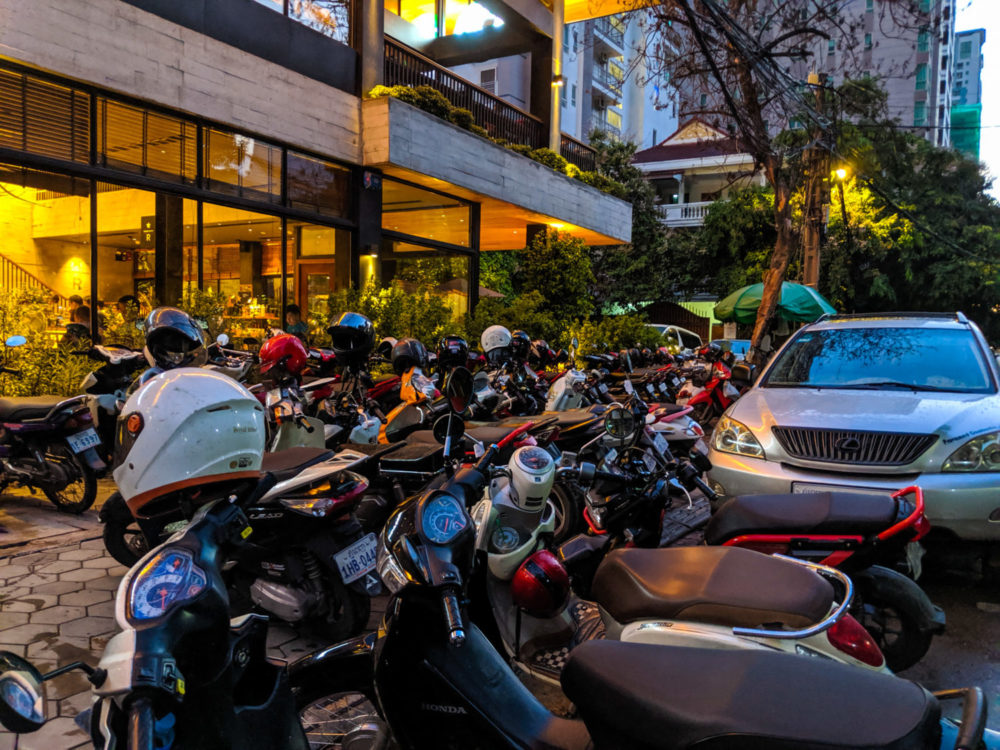








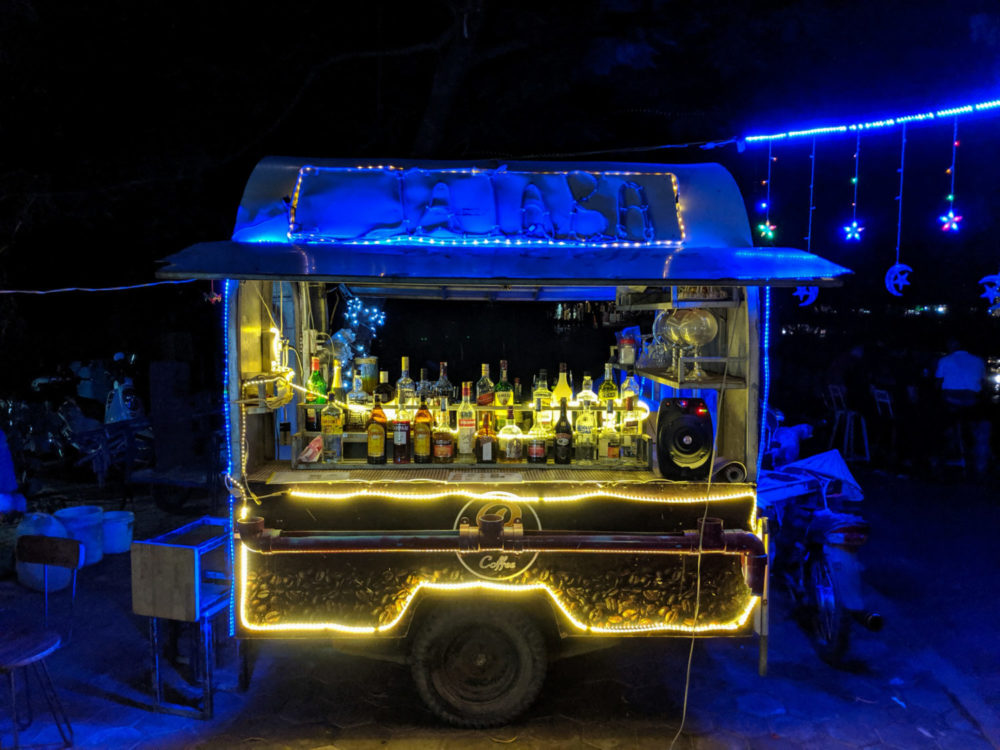











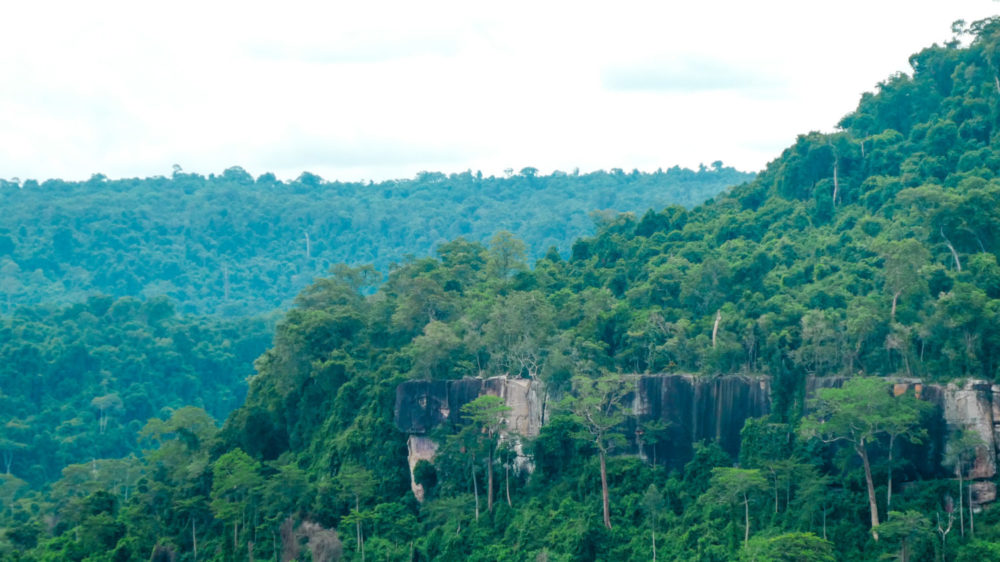

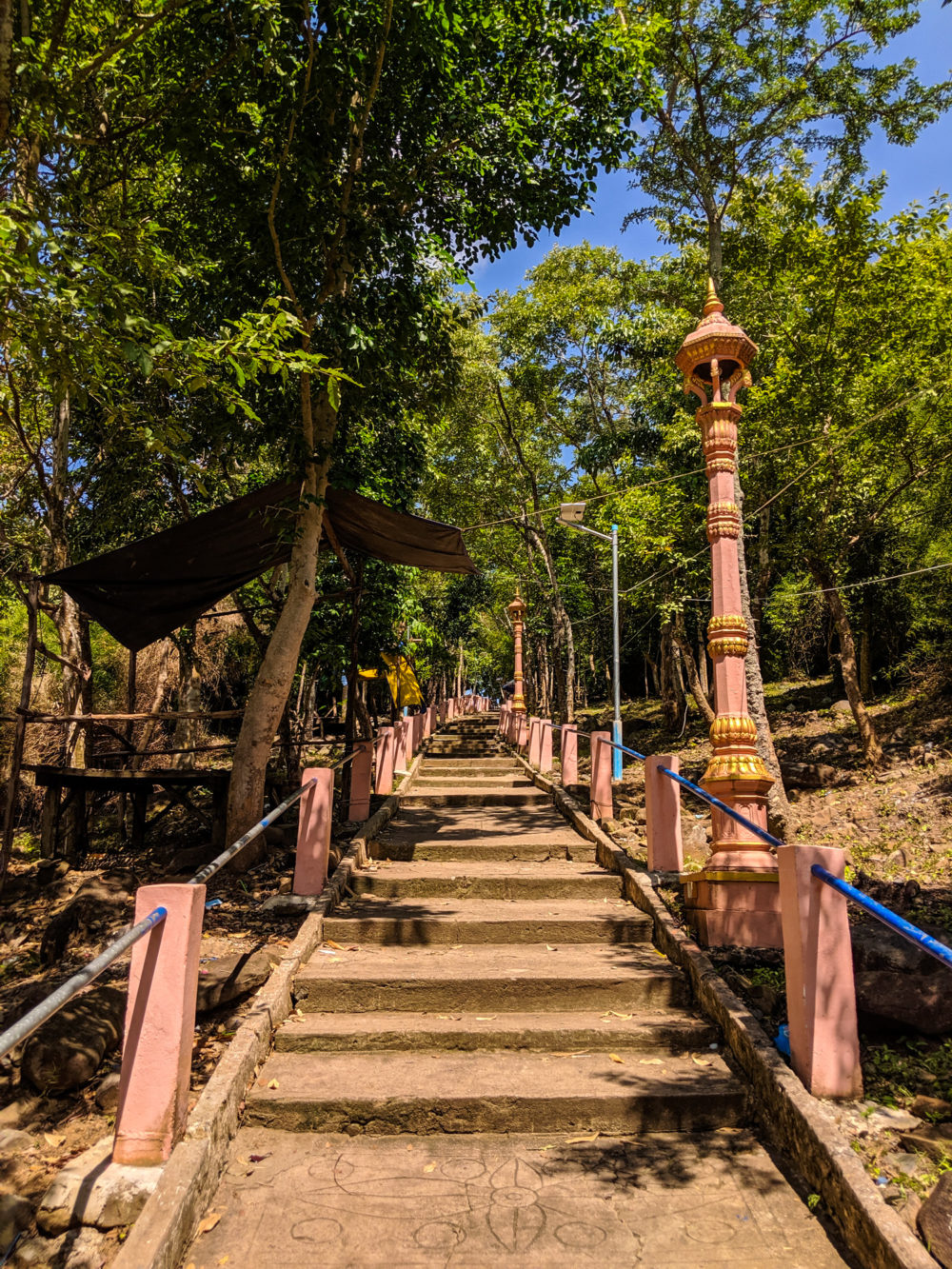











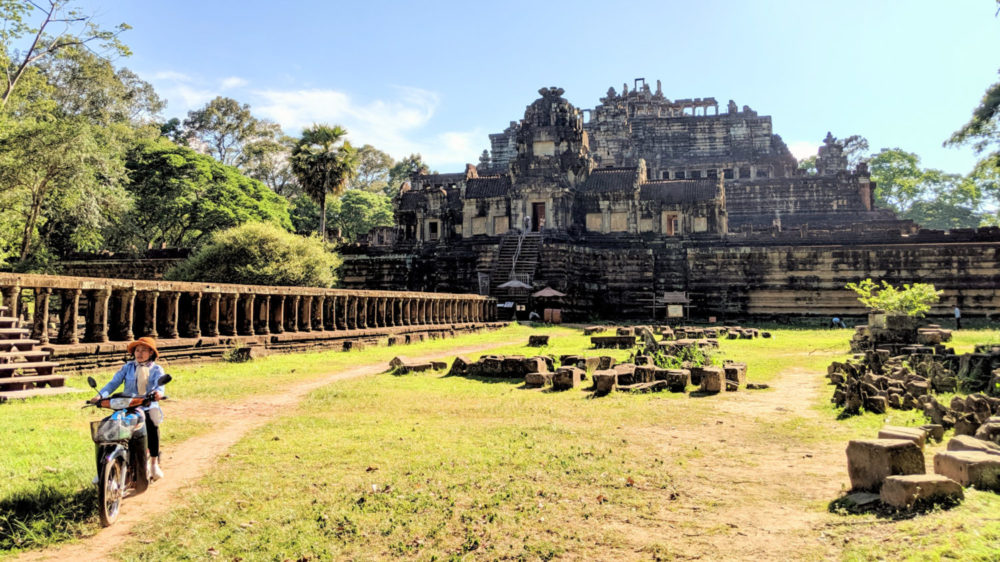














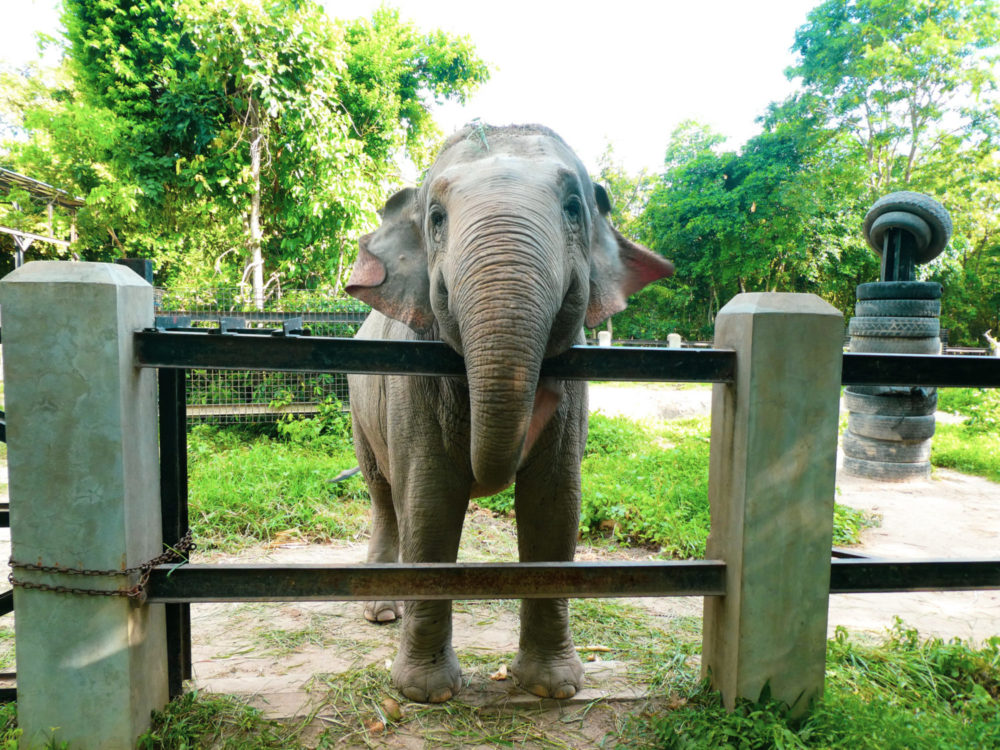
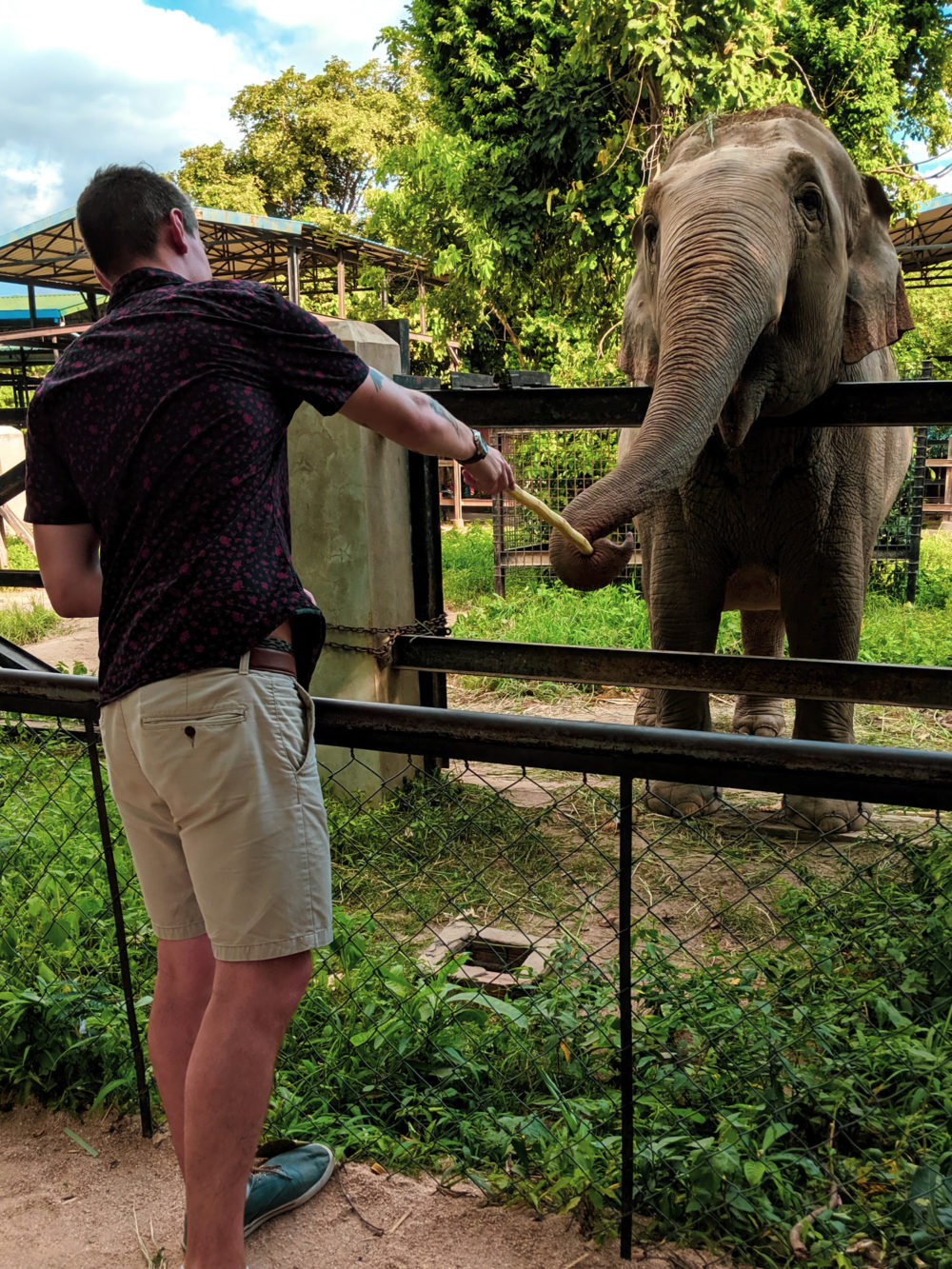















July 15, 2020 @ 3:20 am
I really enjoy reading about your trips and the pictures are great. Thanks for doing what you do.